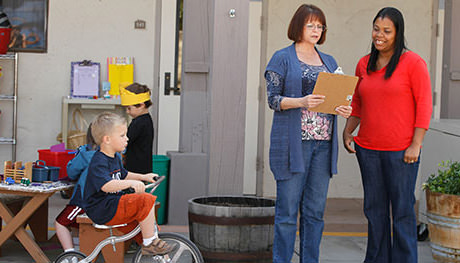Action is the test of what you know and can do. It is where you see the results of reflection and self-assessment. The CompSAT protocol, Keys to Reflection and Inquiry, is designed to help you formulate good questions, pursue inquiry, and take action to improve your daily practice. The results of your actions provide evidence of your professional growth, and hopefully, spur you on to generate more questions and take further action. Action and reflection are essential to the processes of growth and change.

Mykela is a family childcare provider and offers fresh vegetable, fruits, and homemade baked goods to the children in her home. All her families send lunch for their children. Most of the lunches are pre-package and processed chicken nuggets, deli meats, cheeses, and flavored drinks. She knows that these are not the healthiest choices for the children in her care.
She decides to create a lunch policy that requires the families to provide only fresh produce and homemade foods for lunches. At the Fall orientation meeting she informs parents of the new policy and shares some of the snack foods the children enjoy while in her program. She sends home healthy food lists and recipe ideas.
Monday at lunchtime when the children open their lunch bags, Mykela notices that the children are eating the same chicken nuggets, deli meats, cheeses, and flavored drinks. She is perplexed about why she didn't see any changes.
"The Cupcake Crisis" video shows another example of conflicts that can happen around food policies.
List 5 ways to engage with families in developing and implementing a healthy food program.
Use this template to record your observations, thoughts, and feelings. Download the Template
Deepen your understanding by reviewing the Topic: Nutrition in Performance Area 3 in the CA ECE Competencies. Scroll to pages 82 and 83.
Can you find other places in this competency area that address dispositions and understandings related to nutrition and access?

Read the brief entitled "Early Childhood Experiences and Health" on the Robert Wood Johnson Foundation web site.
Visit http://www.letsmove.gov, a program developed by First Lady Michelle Obama to solve the epidemic of childhood obesity within a generation.